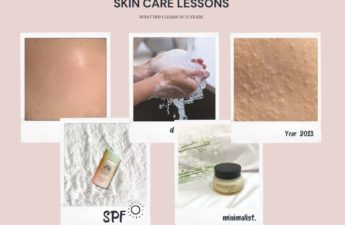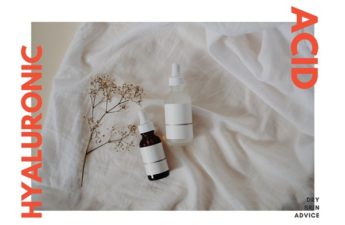Skincare routines and hacks are always trending on social media. It is easy to buy the green product your favorite influencer vouches for, but reading the contents before applying a product to your skin is essential. Some combinations work, while some can be very dangerous and irritate your skin.
Niacinamide and Centella asiatica can be used together on the skin without causing harm. Both products have anti-inflammatory properties that work to reduce redness and irritation, and can even reverse signs of aging.
Before you purchase a product with niacinamide and Centella asiatica or mix the two, keep reading to learn more about how this combination can be used on the skin.
How Niacinamide and Centella asiatica Improve Skin
Niacinamide is a form of vitamin B3, which provides a number of skin-healing properties. Its topical application has shown significant benefits in improving the skin in multiple pieces of research. The water-soluble niacinamide does this by replenishing important coenzymes that decline in concentration with age.
Niacinamide helps stabilize skin barriers, decreases water loss, and thus, improves the moisture content of the skin. It increases the synthesis of proteins like keratin and collagen and helps reduce fine lines and wrinkles. It also has anti-inflammatory properties, and its oral form has shown promising results in treating acne.
On the other hand, Centella asiatica is a plant that has been used medicinally to treat small wounds and various skin conditions including:
- Burns
- Psoriasis
- Eczema
- Scleroderma
Centella asiatica increases cellular proliferation and collagen synthesis, making it a great ingredient for tightening the skin in anti-aging products. Centella asiatica has anti-inflammatory properties useful in treating conditions like eczema and reducing the inflammatory phase of scars.
It increases the production of hyaluronic acid that helps retain moisture in the skin. It also reduces the skin’s pH, repairs its barrier function, and reduces irritation and redness.
As mentioned above, there are similar benefits that both of these ingredients can provide for the skin. These ingredients can minimize skin redness, irritation, and inflammation caused by acne breakouts when applied together. Centella asiatica’s antibacterial properties will work to clean and soothe infected pores, while niacinamide will ensure your skin stays hydrated as it heals.

How To Incorporate Niacinamide and Centella asiatica Into Your Skincare Routine
Before incorporating any new product or ingredient in your skincare routine, the steps listed below should be followed:
- Analyze your skin type and identify the skin problems you want the product to focus on.
- After purchasing a product, do a patch test first to avoid any adverse reactions.
- Follow the steps as explained in the “Directions for use” on the leaflet of the product.
- If you have no results, or severe irritation, redness, or itchiness occur after using the product, consult a dermatologist immediately.
Recommendations for Niacinamide
Niacinamide is available in oral and topical formulations for skin problems. Niacinamide can be combined with almost all ingredients and is found in many different products ranging from creams, gels, lotions, and serums. The best ingredients to combine with niacinamide are retinol, salicylic acid, alpha-hydroxy acids, and hyaluronic acid.
- Use less than 5% concentration. It is an ingredient that is well tolerated by all types of skin. However, if you have sensitive skin, start with a lower concentration. You can increase concentration as you build tolerance.
- Avoid mixing with vitamin C. If combining niacinamide with a Centella asiatica product, make sure to check the ingredient list for vitamin C. As a general rule, it is recommended to keep a fifteen minutes gap in the application of niacinamide and vitamin C.
- Consult a dermatologist before making it a part of your daily routine. Niacinamide is an active ingredient, and even though it is well-tolerated, it is always advised to consult a dermatologist before using it daily.
- Use for at least four weeks for results. Niacinamide shows noticeable results after at least four weeks of daily usage, especially in skin brightening.
Recommendations for Centella asiatica
Centella asiatica use in skincare has just begun trending after its popularity in Korean skincare. The extract of Centella asiatica is safe to incorporate in any step of your skincare routine as it is now available in products ranging from toners to serums and creams.
Centella asiatica can be mixed with vitamin C as they both can increase collagen synthesis and promote wound healing. Together, they can hydrate skin, make it look plump and firm, and reduce wrinkles.

Products That Combine Niacinamide and Centella asiatica
No well-known dermatological brand advertises niacinamide and Centella asiatica together, but some products list them in their ingredient list. These products include:
Baciel Hydra Barrier Cica Cream
Baciel Hydra Barrier Cica Cream, available on Amazon.com, is a daily moisturizing cream meant to calm and hydrate your skin. Since it contains hyaluronic acid, it can be used directly after the cleanser and replace your daily moisturizer. It is suitable for all skin types.
The 71.92% Centella asiatica extract helps soothe sensitive skin, while niacinamide helps build a protective moisture barrier along with the ten different types of hyaluronic acids available in this cream.
Dr. Jart + Cicapair Calming Gel Cream
The Dr. Jart + Cicapair Calming Gel Cream, available on Amazon.com, is an ultra-light moisturizing gel that can be incorporated into your routine after cleanser and is perfect for sensitive skin.
The 76% Centella asiatica leaf water aims to soothe and heal irritable skin and increase collagen formation to reduce blemishes and wrinkles. The gel also has niacinamide that improves skin barriers and, along with other ingredients, significantly improves skin texture.
The Aubree Centella Herb Serum
The Aubree Centella Herb Serum, available on aubreeskin.com, is an unscented herb serum that can be added to your daily routine. It focuses especially on acne-prone skin but is suitable for all skin types.
The Centella extract promotes collagen synthesis and helps in skin healing from cell damage. Niacinamide, along with hyaluronic acid, locks moisture in the skin.
Avoskin Your Skin Bae Niacinamide 12% + Centella Asiatica
The Avoskin Your Skin Bae Niacinamide 12% + Centella Asiatica (found on avoskinbeauty.com) is a hydrating serum that can be applied in a small amount to the face, neck, and decollete. You can follow with a moisturizer. It is safe to use twice a day.
This facial serum contains a 12% niacinamide concentration that aims to nourish and moisturize the skin. It also has Centella asiatica extract for tightening the skin with a refreshed look.
A’PIEU Madecassoside Skin-Repairing Cream
The A’PIEU Madecassoside Skin-Repairing Cream, from Amazon.com, is an intense cream that is optimal for soothing sensitive skin and maintaining hydration. It is ideal for all skin types, particularly acne-prone skin.
It contains madecassoside, the active ingredient of Centella asiatica that reduces inflammation and heals skin. It also has Centella asiatica leaf water to calm inflammation and Niacinamide to minimize redness and fine lines.
The Final Verdict
Niacinamide and Centella asiatica are a combination worth investing in for your skin. The two work marvelously together, especially for irritable, acne-prone skin.
Niacinamide is also more tolerable by the skin when compared to retinol, so using niacinamide and Centella asiatica can be your new holy grail when it comes to reversing aging signs on your skin!
Sources
- Wiley Online Library: Nicotinic acid/niacinamide and the skin
- Wikipedia: Vitamin B3
- NCBI: The Plasma NAD+ Metabolome Is Dysregulated in “Normal” Aging
- ResearchGate: Niacinamide increases biosynthesis of ceramides as well as other stratum corneum lipids to improve the epidermal permeability barrier
- NCBI: How Much Do We Really Know About Our Favorite Cosmeceutical Ingredients?
- NIH PubMed: The role of nicotinamide in acne treatment
- NCBI: Centella asiatica in cosmetology
- NCBI: Pharmacological Review on Centella asiatica: A Potential Herbal Cure-all
- Indian Journal of Pharmacology: Antinociceptive and antiinflammatory effects of Centella asiatica
- The Skin Care Edit: How to Use Niacinamide and an AHA or BHA in Your Skincare Routine for Smooth, Clear, Even-Toned Skin
- NIH PubMed: The effect of niacinamide on reducing cutaneous pigmentation and suppression of melanosome transfer
- Wiley Online Library: Clinical, biometric and structural evaluation of the long-term effects of a topical treatment with ascorbic acid and madecassoside in photoaged human skin
- NCBI: Vitamin C in dermatology
- Wiley Online Library: Niacinamide: A B Vitamin that Improves Aging Facial Skin Appearance




